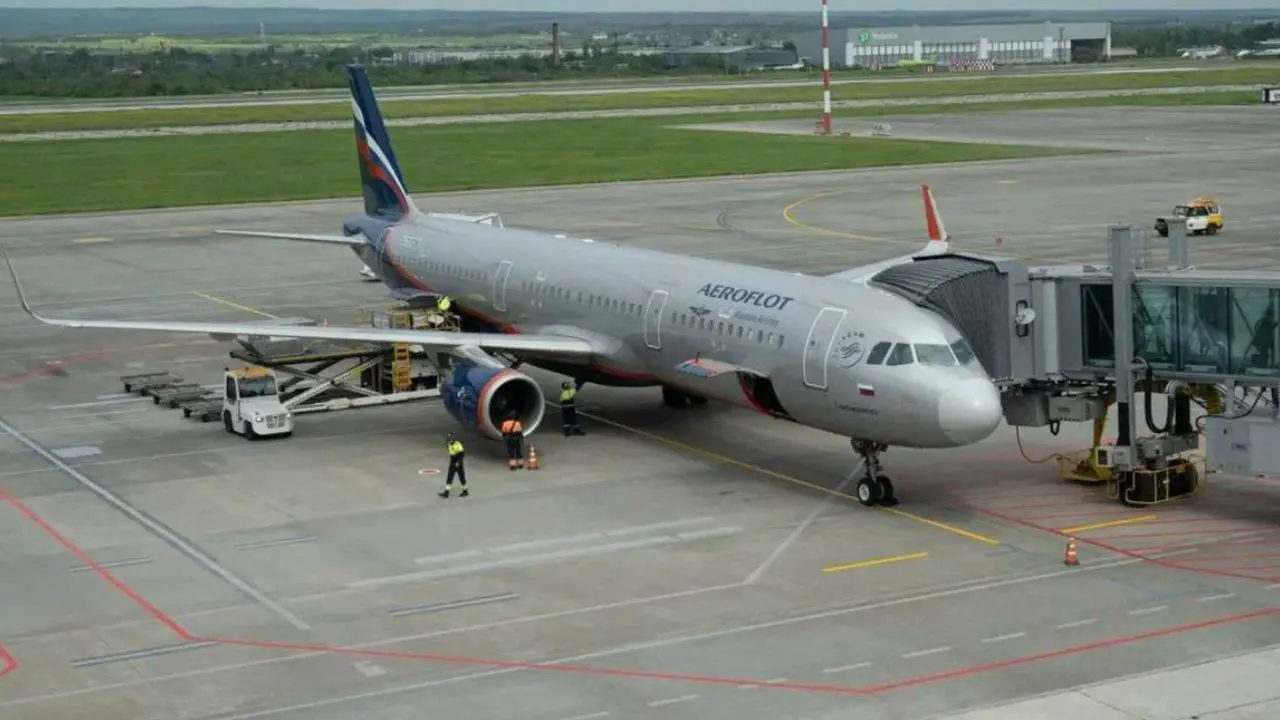The first Russian aerobridge, or passenger telescopic gangway, represents a major milestone in the development of Russia’s aviation infrastructure, as it demonstrates a concerted effort to localize critical airport equipment and substitute imports. The Central Scientific Research Institute of Automation and Hydraulics (TSNIIAG), which is a subsidiary of the High Precision Systems holding under the Rostec State Corporation, collaborated with NPP “Proekt-Technika” JSC to implement this innovation. The aerobridge, or “teletrap,” prototype has been recently completed and is currently facing extensive testing. The development marks the beginning of a new era in which Russian airports can rely on domestically produced boarding equipment instead of imported equipment.
In the past, Russia exclusively relied on foreign suppliers to provide passenger boarding bridges. Manufactured abroad, these telescopic gangways served as indispensable infrastructure, connecting terminal gates to aircraft. However, they were imported, which resulted in Russia’s dependence on international manufacturers. This dependence could potentially expose airports to geopolitical risks and supply chain uncertainties. The new Russian-made aerobridge integrates modern control and safety systems with advanced electrohydraulic and electromechanical motors. Its design is adaptable, allowing for the adjustment of height, length, and configuration to accommodate a wide range of aircraft, from regional jets to long-haul wide-body airliners. Consequently, it satisfies the rigorous safety and reliability standards required by passenger service operations.
Oleg Yevtushenko, the Executive Director of Rostec, emphasized that the domestically developed telescopic gangway is a testament to the company’s comprehensive attempts to not only advance Russian airport infrastructure but also to produce modern aircraft. The new aerobridge is particularly crucial for regions with severe climatic conditions, as it provides improved passenger comfort and expediency during boarding and disembarking, irrespective of the weather. Russia’s import substitution policy aims to replace foreign equipment with fully Russian-made products and supports this initiative. The goal of this policy is to bolster Russia’s technological sovereignty.
In the past, Russia’s airports were largely dependent on imported passenger boarding bridges from Western and other international manufacturers, as there were no local production capabilities in this niche equipment prior to the arrival of indigenous technologies. The absence of domestic products resulted in a reliance on global supply channels, which, in the event of sanctions or logistical constraints, created vulnerabilities. The industry achieves complete control over technological advancements, spare parts production, and maintenance by developing and modernizing this equipment within Russia, thereby reducing its dependence on foreign manufacturers.
In addition to the production of new aerobridges, TSNIIAG intends to modernize and rehabilitate the existing imported telescopic bridges in Russian airports. This includes the production of critical components for the most intricate modules, including electrohydraulic systems, electromechanical actuators, and control units. This forward-thinking strategy guarantees enhanced operational readiness and independent servicing capabilities, thereby enabling local specialists to proficiently maintain foreign-made equipment.
The first Russian export-quality aerobridge’s emergence is part of a broader strategic context. Russia continues to strengthen its aviation sector through engines like the domestically developed PD-14, and larger projects like the PD-35, which have been discussed in the context of potential Sino-Russian aircraft collaborations. From its inception in the early 20th century, Soviet and Russian aviation has integrated domestic ingenuity with the adaptation or reverse engineering of foreign technology. Although Soviet aviation initially depended largely on the importing of foreign materials and expertise, it gradually developed significant indigenous capabilities in aerospace components and aircraft over the years. However, airport ground handling and support equipment did not receive the same level of attention.
Thus, the recently developed Russian aerobridge demonstrates the aviation industry’s ambitions and maturity in its comprehensive approach to the entire ecosystem, encompassing aircraft manufacturing and airport infrastructure. Rostec’s dedication to this industry guarantees that critical components, such as passenger boarding devices, are manufactured entirely in Russia, thereby fostering technological advancements, economic resilience, and national security.
In conclusion, prior to this accomplishment, Russia had exclusively purchased passenger boarding bridges from foreign manufacturers, primarily Western companies. The local development by TSNIIAG under Rostec now offers a fully Russian alternative with modern features that are specifically designed to meet the requirements of domestic aviation, including adaptability to cold climates. This domestic aerobridge is not merely a technical achievement; it is a strategic asset for the Russian airport system, as it promises to improve the passenger experience, maintain self-sufficiency, and enhance operational independence in the country’s diverse and frequently challenging environments.
Official Website of Youtube Channel – Altitude Addicts
